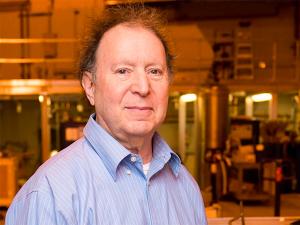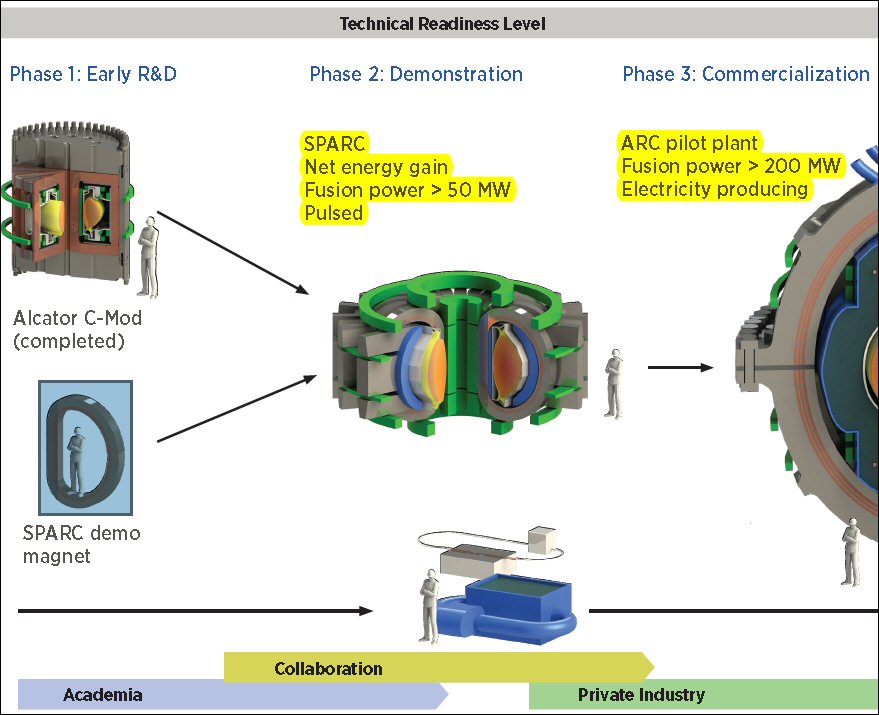#32.7 Did MIT and Commonwealth Fusion Systems Mislead Fusion Investors?
July 2, 2019 — by Steven B. Krivit —
In a June 27, 2019, press release, Commonwealth Fusion Systems, a private spin-off from MIT, said it had raised another $50 million from investors, bringing its total fusion reactor funding to $115 million.
MIT began operating its first experimental nuclear fusion reactor in 1972, funded by and under the auspices of the Department of Energy. The federal program ran until 2016 when the DOE and Congress, after four years of indecision, pulled the plug.
During that half-century, MIT had developed a reputation for being a leading plasma fusion research center and had trained many of the world’s plasma physicists. In the absence of public funding from U.S. taxpayers, MIT decided not to continue operating the reactor. Instead, it developed plans for a new reactor that would be funded by private investment.
A year ago, on March 9, 2018, MIT issued a press release announcing its plans for its next experimental fusion reactor:
SPARC is designed to produce about 100 MW of heat. While it will not turn that heat into electricity, it will produce, in pulses of about 10 seconds, as much power as is used by a small city. That output would be more than twice the power used to heat the plasma, achieving the ultimate technical milestone: positive net energy from fusion.
In the June 27, 2019, press release, Commonwealth said that SPARC is designed to generate 100 MW of fusion power. Commonwealth said that, in six years from now, in collaboration with MIT’s Plasma Science and Fusion Center, SPARC will “demonstrate net energy gain from fusion for the first time in history.”
Top MIT executives have been involved in the well-coordinated publicity campaign. On the same day as last year’s press release, the Boston Globe published an op-ed article by MIT Vice President for Research Maria Zuber.
SPARC, Zuber said, is designed to “demonstrate, for the first time, control of a fusion plasma that produces more energy than it consumes.”

Maria Zuber, MIT Vice President for Research
Investors in the MIT initiative include Future Ventures, Khosla Ventures, Lowercase Capital, Moore Strategic Ventures, Safar Partners, Schooner Capital, Starlight Ventures, Eni, and Breakthrough Energy Ventures.
The MIT/Commonwealth plan outlines its next two planned reactors, SPARC and its successor, ARC. The plans for the SPARC reactor specify a fusion power output of 50 to 100 MW of heat. The plans specify that the thermal power injected into the center of the reactor, to heat the fuel, will be 30 MW.
MIT has not disclosed to the public, and perhaps not to its investors, two other crucial values. The first value is the electrical power required to create the 30 MW of thermal heating power. New Energy Times asked Martin Greenwald, a founding member of the SPARC team and the deputy director of the MIT Plasma Science and Fusion Center, for that value. New Energy Times also asked Brandon Sorbom, chief scientific officer of Commonwealth Fusion Systems. Neither of them responded to e-mails or phone messages.

Martin Greenwald, deputy director of the MIT Plasma Science and Fusion Center
Two years ago, New Energy Times spoke with Laban Coblentz, the spokesman for the International Thermonuclear Experimental Reactor (ITER). The ITER reactor is designed to use 50 MW of injected thermal power to heat the fuel. Coblentz told New Energy Times that 150 MW of electricity would be required to power the radio frequency and neutral beam injection systems that produce the 50 MW of heating power injected into ITER. If the conversion efficiency is the same with SPARC, it will require 90 MW of electricity to heat the fuel.
The second crucial value that MIT omitted is the total input electrical power required to operate the SPARC reactor. SPARC is not designed to produce electricity; the output will be measured only in the thermal power produced by the fusion plasma. Only its planned successor, the ARC reactor, is intended to produce electricity.
Nevertheless, the value for the total input electrical power required to operate SPARC is important because it will provide a real indication of the progress toward the ultimate technical milestone: practical net power output from a fusion reactor.

Although the total input electrical power required to operate the SPARC reactor is not evident in any of its public disclosures, the world’s leading engineering university certainly must have a rough idea how much electrical power SPARC is expected to draw before engineers turn the machine on. New Energy Times asked Greenwald and Sorbom for that value. Neither of them responded to e-mails or phone messages.
If SPARC requires 90 MW of electricity to heat the plasma, and it requires only an additional 10 MW of power to operate the remainder of the machine, the device, at best, will have a net output of zero MW of thermal power from fusion.
If SPARC requires 90 MW of electricity to heat the plasma, and it requires only an additional 1 MW of power to operate the remainder of the machine, the device, at best, will have a net output of 9 MW of thermal power from fusion.
That is unless MIT has secretly developed a revolutionary way to convert electrical power into injected thermal power with a breakthrough level of efficiency.
Meanwhile, because of MIT and Commonwealth’s omissions and misleading use of technical language, the prestigious university and its spinoff have misled most of the journalists who have covered the story.
March 11, 2019/Molly Lempriere/Power-Technology.com:
The Massachusetts Institute of Technology has announced that its SPARC reactor could begin producing energy from nuclear fusion by 2025, but it is a small reactor and likely to produce between just 50 MW and 100 MW of power. While this is much smaller than the long-predicted perfect fusion reactors, could it be an appealing source of energy?
March 9, 2018/Jeff Tollefson/Nature:
Within the next decade, the team hopes to develop a prototype reactor [SPARC] that can generate more energy than it consumes. Then, they hope to develop a 200-megwatt pilot power plant [ARC] that can export electricity to the grid.
March 9, 2018/Hannah Devlin/The Guardian:
The experimental reactor is designed to produce about 100 MW of heat. While it will not turn that heat into electricity, it will produce, in pulses of about 10 seconds, as much power as is used by a small city. The scientists anticipate the output would be more than twice the power used to heat the plasma, achieving the ultimate technical milestone: positive net energy from fusion.
March 12, 2018/Chelsea Gohd/Futurism:
The trickiness of using fusion as a form of energy is that, to date, every experiment has yielded net negative energy — meaning more energy goes into heating [the fuel] than comes out for potential use. … SPARC’s goal? The first-ever net positive energy gain from fusion.
Sept. 26, 2018/Akshat Rathi/Quartz:
So far, however, the energy put into achieving any form of fusion has been more than the energy that we’ve been able to get out of the system. … The UK’s JET reactor achieved an energy gain of 0.67, meaning for every unit of energy put into the system, it generated 0.67 units of energy. If it works, [SPARC] would be the world’s first nuclear-fusion reactor to show net-positive energy gain. The biggest story in the fusion field these days is the growing amount of money pouring in from private investors. A fusion startup today only needs to show that it has a reactor able to achieve net-positive energy gain—it doesn’t even need to build a full-fledged power plant—to prove itself.
[Note: The second sentence is not true. For every watt of electrical power put into the JET system, it released 0.02 Watts of power from fusion. Promoters of JET have been guilty of the same omissions.]
Nov. 6, 2018/Colm Gorey/Silicon Republic:
The researchers plan to use this technology to build magnets at the scale required for fusion, followed by construction of what would be the world’s first fusion experiment to yield a net energy gain. … Net energy gain – where the reactor produces more energy than is put into it – is the end goal of nuclear fusion, with its advocates promising that such a breakthrough would allow for us to produce near-limitless, clean energy at very little cost. … The researchers are working towards the goal of having SPARC operational by 2025, with an output of between 50 MW and 100 MW.
Fusion leaders at MIT and Commonwealth have had a year to correct any unintended misinterpretations of their public communications and set the record straight.
At least the first investor in MIT’s Commonwealth appears to have taken the bait. It was the Italian energy company called Eni. According to its press release on March 9, 2018, Eni thought its $50 million would go toward the “realization of an experimental net energy fusion device.”
MIT had claimed that SPARC would “produce, in pulses of about 10 seconds, as much power as is used by a small city.”
However, if the reactor achieves its highest expected output — 100 MW of fusion power — and if the researchers do not have secret plans that will enable them to convert electrical power into injected thermal power at an unprecedented efficiency, and if the remainder of the reactor miraculously requires the input of only one MW of electricity, SPARC will produce, in pulses of about 10 seconds, a grand total of 9 MW of fusion heat.
The MIT strategy goes back to June 16, 2017, when the MIT news office published quotes from two of its professors, Dennis G. Whyte and Anne White. Whyte is the director of the Plasma Science and Fusion Center. White is the head of the Nuclear Science and Engineering Department and associate director of the Plasma Science and Fusion Center.

Anne White and Dennis G. Whyte
The professors said that SPARC “will carry out the world’s first demonstration of net energy from a fusion experiment — making SPARC the first fusion device to make more power than it consumes.”
Making attractive fusion claims that are not falsehoods is difficult to do. Had White and Whyte said “fusion device to make more fusion power than it consumes,” their claim would have been misleading but technically legitimate. The day after the article published two years ago, New Energy Times asked Whyte for details about the power values. Whyte replied and said the details were confidential. Days later, MIT removed the article.
MIT and Commonwealth representatives have made public fusion claims that they cannot support. They provided the projected input value for the injected heat into SPARC but not the input electrical value to create that heat or the input electrical value to operate the reactor. Removing an article from a Web site is easy. Returning $115 million is another matter.
RELATED:

